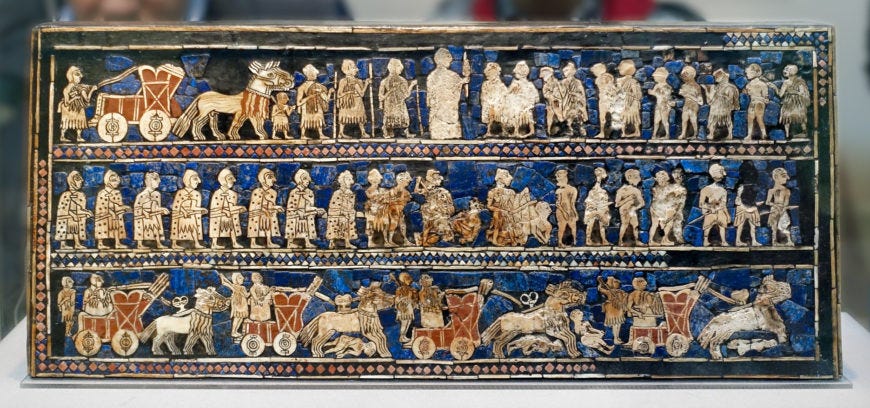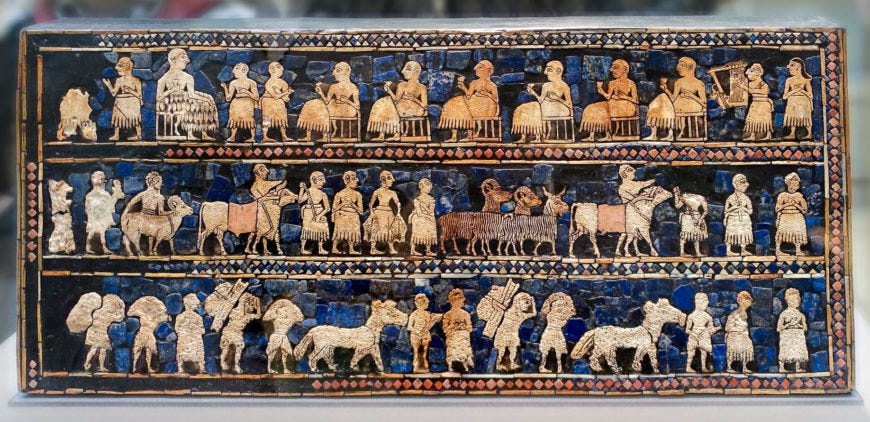With the personifications of his destiny to guide and aid him, the hero goes forward in his adventure until he comes to the "threshold guardian" at the entrance to the zone of magnified power. Such custodians bound the world in the four directions— also up and down—standing for the limits of the hero's present sphere, or life horizon. Beyond them is darkness, the unknown, and danger; just as beyond the parental watch is danger to the infant and beyond the protection of his society danger to the member of the tribe.
—Joseph Campbell, The Hero with a Thousand Faces
I ’ve found that a substantial fraction of many people’s days is spent worrying about what others think of them. If nobody ever worried about what was in other people’s heads, we’d all be 33 percent more effective in our lives and on our jobs.
— Randy Pausch, The Last Lecture


When I first stumbled upon Joseph Campbell’s Hero’s Journey, embarking on an adventure to face trials in return of transformation felt only a mythological abstraction.
In the quiets moments before dawn breaks through darkness, I reflect upon the contemplation which fill my mind.
I reflect upon the microcosm of the perpetual cycle of death and rebirth through both personal and collective consciousness: Ἀνάστασις τῆς Ἀνατολῆς (Anastasis tēs Anatolēs).
Argonautica (The Call to Adventure)
Both daunting and transformative, the ordinary worlds crumbling creates space for new possibilities, beyond the boundary stones inscribed to celestial edicts, shattered under the weight of divine purpose: צמצום ושבירה סללו דרך לתיקון ושלמות (Tzimtzum v'shvira salelu derech b'tikkun u'shleimut).
As the soul undergoes transmutation amidst the labyrinthine patterns of existence divine purpose emerges, where mortality meets the perilous contractions to humanity’s perpetual pursuit of meaning.
It paves the way for rectification, leaving a stasis aching to depart exile suspended between the mortal and the mythic, through breaking wholeness captured in spaces left behind.
The Fall of Troy (Refusal of the Call)
Heralding the impending doom within fear of failure and self-doubt, the esoteric truths eventually builds into an action impossible to ignore, deposed to internally juxtaposed dispute between conflict and disturbance.
Leaving behind what was once known in exchange for an underworld of uncertainty, heroes hold hesitation in full display, manifest in the strange sensation of fear mixed with excitement, driven by Abram’s reminder (Genesis 12:1-4) to see more than a cave1.
Homeric Hymns (Meeting the Mentor)
With hypomania and diaphaneity, the iconoclast traditions passed down orally for generations act as mentors of truth and practical instantiations, ex nihilo as living embodiments of παράκλητος (parakletos) who guide divine advocates in the labyrinth of self-discovery2.
The banal exoskeletons sublime beyond form, puissance to epiphanies about the past, society, and the self, are unbidden eidolons, celestial conduits carried forward to future generations, in communion to those preparing to cross into new, uncharted territory3.
Thebaid (Crossing the Threshold)
Crossing thresholds requires daily praxis of קריעת ים סוף (kriat yam suf), where faith manifest as the Bildung between the divine and human natures dance in actus purus to becoming reconciliatory to necessity, freedom, and virtue: the περιχώρησις (Perichoresis)4.
The state of contemplative vision (neptic theoria), is rooted in spiritual watchfulness and inner purification, where harmonic necessity towards primordial alienation is in synthetic unity, disciplined by adherence to divine law.
Such rite de passage, is illustrated in various contexts, ranging from Ezekiel’s vision of restoration in the valley of dry bones to Dante’s anagogical ascent toward divine union in The Divine Comedy, becoming archetypal resolutions5.
Dionysiaca (Tests, Allies, and Enemies)
The dialectic of subjectivity allies appearances to radical alterity in confrontation of the self, initiating the nexus of intersubjectivity where contingent interplays of mutual recognition and existential inauthenticity are catalyzed within the ontological disjunction symbolized in the concept of מַאֲבָק עִם יֵצֶר הָרָע לְתִקּוּן הַנֶּפֶשׁ (Ma'avak im Yetzer Hara l'Tikkun ha'Nefesh)6.
From these antinomies of adversity arises an aporetic synthesis, the σκιά (skia) of unexamined fears casting shadows on the soul’s journey toward light, where dualities of singularity and multiplicity in recursive genesis form the telos of becoming7.
Oppian’s Halietikcs (Approach to the Inmost Cave)
The apotheosis of individuated being destabilizes the egoic subjectivity within the hero’s descent into the "inmost cave," constituting to an existentially charged confrontation with ontological nullity, as the ego faces its own annihilation which consummates the experience of אין (ayin)8.
As old identities dissolve, catharsis emerges through the hero’s breakdown and rebirth in isolation, where psychic fragmentation and synthesis transform existence into holy service, precipitating the inexorable encounter required in the קדושה (kedusha).
Hekale (The Ordeal)
This apocalyptic confrontation unfolds as the titular ordeal, the struggle for meaning and reason in being, overwhelmingly subjective to confrontations entangled in the disintegration of the self.
The existential crucible in the hero’s Wille initiates the metaphysical movement towards the ascent of annihilation: Nihilatio ad finem ultimum et principium absolutum9.
It implicates the antinomy between the phenomenal and noumenal realms, the contingent and the necessary, leading to estrangement from its ontic essence, tethering spatial exitus et reductio to the catharsis which follows new ontological regions of identities.
Argonactica (The Reward of Seizing the Sword)
The fractured order of existence is restored by the union of the created and the uncreated, marked by התלהבות-דבקות (hitlahavut-devekut) to represent an ecstatic state of mystical consciousness10.
This divine process is mirrored divine deification towards perfected unity, drawn from the union of the soul seen in Genesis 2:7 and Exodus 12:5 (cf. Ezekiel 37:17).
These concepts are subsequently seen through the psychical metabolism in which nourishes the assimilated psyche, overcoming apophatic mysticism within theoria and poiesis, the contemplations found in divine love, moral perfection, and spiritual unity11.
The Loves of Hero and Leander (The Road Back)
To find creation in the human space of contradictions, the waters of time exhibit the road back, where heavenly vision must be grounded in earthy service, as the world intertwines in phénoménologie de l'esprit.
It surmounts the perpetual dialectic sursum corda that elevates the heart and mind towards divine unity, transfiguring the Mithraic bull-slaying’s into participatio actuosa, where covenantal vision is an ontogenetic struggle between mortal dissolution and vital resurgence12.
It lays the foundations for an unio mystica amidst the divine’s imitatio amor sanctus, elevated to the eternal oneness in becoming the cosmic destruction reawakened in prophetic reunion: היכלות יחוד ברית שלום (heikhalot yichud brit shalom)13.
Psychomachia (The Resurrection)
The mortification of corporeality yields to the pneumatologically apotheosis of virtue, as the resurrection signifies not merely a personal transcendence of finitude, but an ontological ingress.
This is where the soul’s anagogic ascent in a purgative crucible becomes subsumed within the overarching οἰκονομία (oikonomia) of divine teleology.
Thus, death, as the liminal threshold of dissolution, is the allegorized kenotic descent and antistatic exaltation in the generative locus of theosis of apokatastasis, an icon of hypostatic union: תיקון עולם (tikkun olam).
Mystical Hymns of Orpheus (Return with the Elixir)
The threads of individual existence are subsumed into a banal acquisition, evoked in the hero’s return with the elixir, not the perpetual orbits of the infinite symphony of creatio continua, but consummations in esoteric communion with ידיעה (yediah) and קדושה (kedusha).
It is the initiatory gnosis, the metaphysical chrysopoeia, articulated in Iamblichus’ De Mysteriis.
This apostrophic odyssey culminates in the ontological katabasis and anastasis of the self, where the epikleusis conjures the sublime paradox birthed in the emergent logos of the finite and the infinite.
Die Heldenreise: Triumph des Selbst
The hero’s journey, as illustrated through myth and personal reflection, involves crossing boundaries of the known world to face challenges, integrate wisdom, and transform both self and reality through trials, guidance, and ultimate renewal.
What veiled sentinels bar your passage, born of fear and shadow?
What luminous truth stirs in the unknown, calling for the courage to transcend?
In Plato's Republic (Book VII), the cave is where prisoners become accustomed to shadows on the wall.
By facing fear and discomfort (leaving ignorance behind), these prisoners can experience the outside world; though blinding and initially uncertain, this eventually leads to revelations of truth and stir an exhilarating sense of discovery and beauty.
The phrase תורה שבעל פה (Torah she'ba'al peh), means “Oral Torah.”
It embodies the unbroken chain of tradition, serving as transmission of the dynamic interplay between divine law and human hermeneutics
Towards the metanoia (μετάνοια) of the seeker, where aporetic ingress holds autotelic epigenesis, creates entry points of spiritual and existential unfolding: it illuminates a haecceity (distinctive essence) orientating the chiasmic inflection chiseled upon Ordo itineris ad mentem animae mundi (the order of the journey to the mind of the soul of the world).
Athena’s intervention (particularly with Odysseus) and figures like the Grail King provide divine wisdom, symbolic of the transcendence that bridges the mortal and divine, through suffering divine communion which perpetuates the epistemic and ontological metabasis as mediators of the logos.
קריעת ים סוף (Kriat Yam Suf) means ‘parting of waters,’ occurring in Shemot 14:21-22.
περιχώρησις (Perichoresis) is a term which signifies the mutual indwelling of natures, finding expression in the divine-human synergy uniting eternity and temporality in immanent actions of transcendence:
ἀνάγκη/דרור (dror) conveys the inevitability of fate or necessity
ἐλευθερία/מידה טובה (midah tovah) represents liberation
ἀρετή/צדקה (tzedakah) is the culmination of moral excellence
The rite de passage harmonizes the tripartite soul (τριτοειδής ψυχή):
λογιστικόν (rational)
θυμοειδές (spirited)
ἐπιθυμητικόν (appetitive)
Such unity is the mortal synesthesia, where divine law is bound towards soteriological progression from amor sui toward amor Dei:
וְאָ֣הַבְתָּ֔ אֵ֖ת יְהֹוָ֣ה אֱלֹהֶ֑יךָ בְּכׇל־לְבָבְךָ֥ וּבְכׇל־נַפְשְׁךָ֖ וּבְכׇל־מְאֹדֶֽךָ (Deut 6:5)
The term מַאֲבָק עִם יֵצֶר הָרָע לְתִקּוּן הַנֶּפֶשׁ represents the struggle with the evil inclination for the rectification or refinement of the soul.
The collapse of dominant structures disrupts meaning, creating tension between individual will and collective energy.
Ayin is divine nothingness, i.e., the womb of rebirth.
Annihilation is the ultimate end and the absolute beginning.
A process embodied by התלהבות-דבקות (hitlahavut-devekut), finds its roots in ביטול המציאות (bittul ha-metziut), where the annulment of worldly existence undergoes kenosis between the self and the divine, dissolving boundaries to transcend the ego: דבקות רשימו צמצום אין-סוף (devekut reshimu tzimtzum Ein-Sof).
This culminates in the described interplay between the work of creation (מעשה בראשית, Ma'aseh Bereshit) and the unification of God’s name in the restoration of all things (ייחוד השם בתיקון הכל, Yichud Hashem B'tikkun Hakol), cleaved to reshape ordinary consciousness into contemplatio perfecta (perfect contemplation of divine reality).
Cf. Song of Songs 1:3, Job 1:1, and Ephesians 4:3.
This process transcends the continual dialectic of sursum corda, elevating the heart and mind to analogia entis prosopon, where motifs like the Mithraic bull-slaying act as active participation in the ontogenetic struggle between mortal dissolution and vital resurgence, in which the soul’s dual call is reflective of eschatological reunification.




WOW!